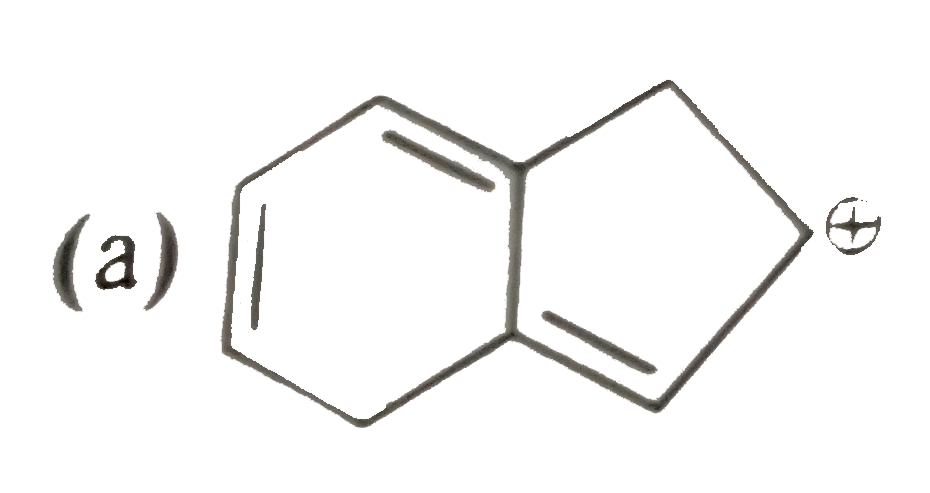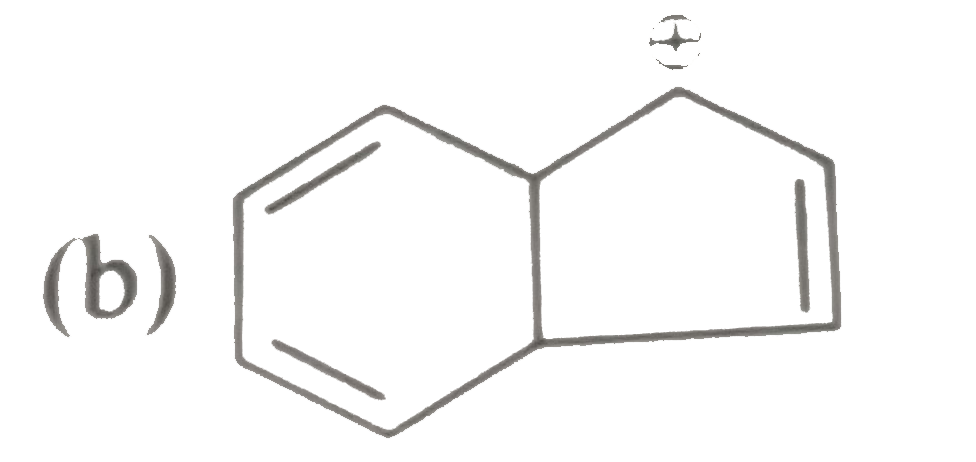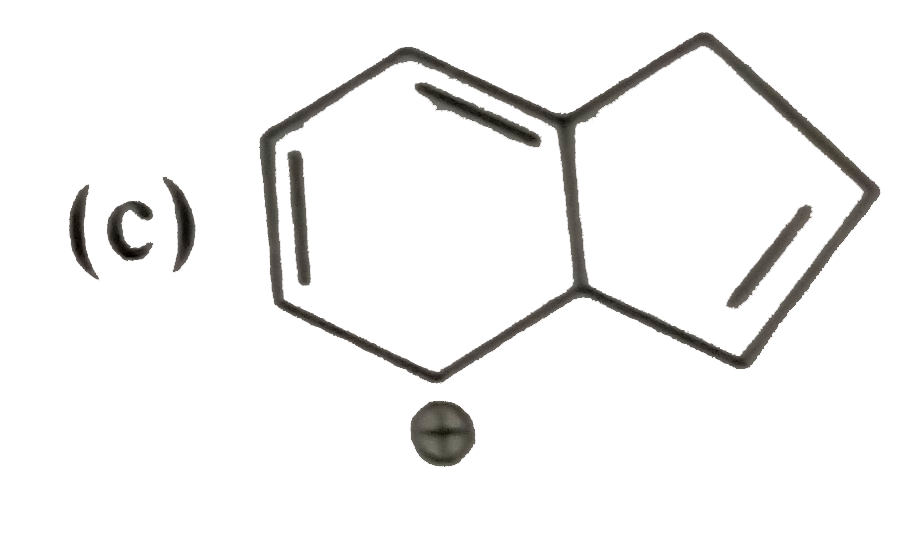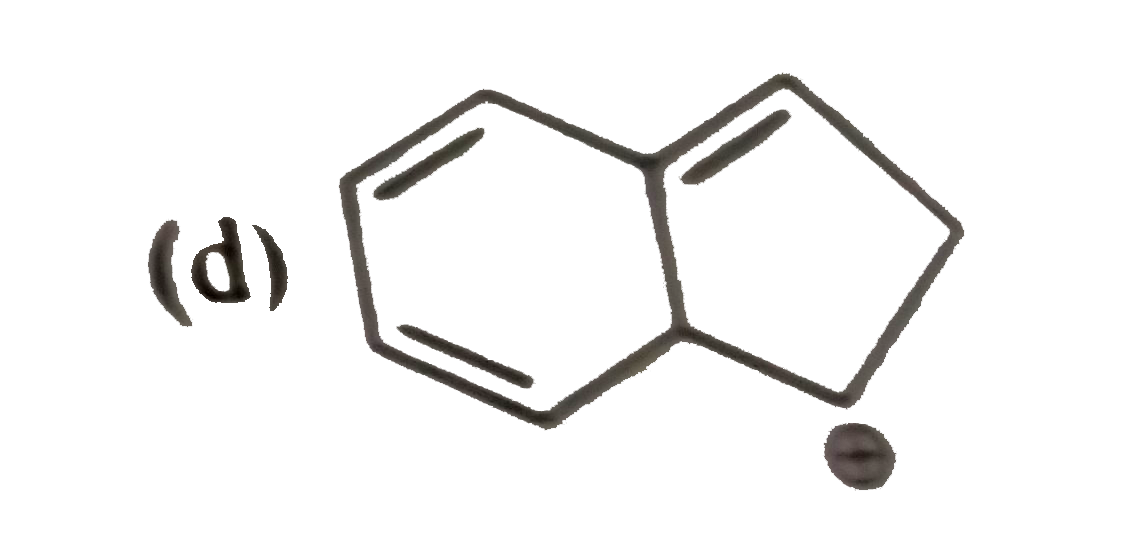Carbocations may be stabilised by :
-bonds only at phenylic position
-bonds only at phenylic position
-bonds at allylic and benzylic position also
effect
The correct Answer is:C
To solve the question on how carbocations can be stabilized, we can break down the stabilization mechanisms step by step.
Step 1: Understanding Carbocations
Carbocations are positively charged carbon species that are electron deficient. Their stability is crucial in organic chemistry, as it influences reaction mechanisms and pathways.
Hint: Remember that carbocations are electron-deficient, which means they need stabilization from electron-rich species.
Step 2: Identifying Stabilization Mechanisms
Carbocations can be stabilized through resonance and hyperconjugation. We will explore different positions where carbocations can be formed and how they can be stabilized.
Hint: Think about how resonance structures can redistribute charge and stabilize the positive charge.
Step 3: Stabilization by Resonance
1. Benzylic Position: A carbocation at the benzylic position (next to a benzene ring) can be stabilized through resonance. The positive charge can delocalize into the aromatic ring, forming resonance structures.
Hint: Look for structures where the positive charge can interact with pi electrons from adjacent double bonds.
2. Allylic Position: Similarly, an allylic carbocation (adjacent to a double bond) can also be stabilized by resonance. The double bond can shift, allowing the positive charge to be shared across multiple atoms.
Hint: Consider how moving a double bond can create different resonance forms that stabilize the positive charge.
Step 4: Evaluating Other Positions
3. Vinylic Position: A carbocation at the vinylic position (directly on a double bond) is not stabilized by resonance because the positive charge cannot be delocalized effectively.
Hint: Recall that for effective resonance, the positive charge must be adjacent to a pi bond that can participate in resonance.
4. Phenolic Position: A carbocation at the phenolic position (directly on the aromatic ring) is also not effectively stabilized by resonance in the same way as benzylic or allylic carbocations.
Hint: Think about how the structure of the aromatic ring affects the ability of the positive charge to be stabilized.
Step 5: Considering Inductive Effects
5. Inductive Effect: The -I effect (negative inductive effect) refers to the withdrawal of electron density through sigma bonds. Since carbocations are already electron deficient, any further withdrawal of electrons will destabilize them.
Hint: Remember that electron-withdrawing groups will not stabilize a positively charged species.
Conclusion
From the analysis, we conclude that carbocations can be stabilized primarily through resonance at the benzylic and allylic positions. The correct answer to the question is that carbocations are stabilized by resonance, particularly in the benzylic and allylic positions.
Final Answer: Carbocations may be stabilized by resonance at the benzylic and allylic positions.
Carbocations are positively charged carbon species that are electron deficient. Their stability is crucial in organic chemistry, as it influences reaction mechanisms and pathways.
Carbocations can be stabilized through resonance and hyperconjugation. We will explore different positions where carbocations can be formed and how they can be stabilized.
1. Benzylic Position: A carbocation at the benzylic position (next to a benzene ring) can be stabilized through resonance. The positive charge can delocalize into the aromatic ring, forming resonance structures.
3. Vinylic Position: A carbocation at the vinylic position (directly on a double bond) is not stabilized by resonance because the positive charge cannot be delocalized effectively.
5. Inductive Effect: The -I effect (negative inductive effect) refers to the withdrawal of electron density through sigma bonds. Since carbocations are already electron deficient, any further withdrawal of electrons will destabilize them.
From the analysis, we conclude that carbocations can be stabilized primarily through resonance at the benzylic and allylic positions. The correct answer to the question is that carbocations are stabilized by resonance, particularly in the benzylic and allylic positions.
Topper's Solved these Questions
- BOOK - HIMANSHU PANDEYCHAPTER - GENERAL ORGANIC CHEMISTRYEXERCISE - Level 1 (Q.26 To Q.49)24videos
GENERAL ORGANIC CHEMISTRY
- BOOK - HIMANSHU PANDEYCHAPTER - GENERAL ORGANIC CHEMISTRYEXERCISE - Level 2 (Q.1 To Q.25)25videos
GENERAL ORGANIC CHEMISTRY
- BOOK - HIMANSHU PANDEYCHAPTER - CHEMISTRY IN DAILY LIFEEXERCISE - Integer Answer Type Problems7videos
CHEMISTRY IN DAILY LIFE
- BOOK - HIMANSHU PANDEYCHAPTER - HALIDESEXERCISE - Subjective Type Problems10videos
HALIDES
Similar Questions
Knowledge Check
- Question 1 - Select One
Carbocation are
AArrhenius acidsBBronsted acidsCLowry acidsDLewis acids - Question 2 - Select One
Which carbocation is most stabilised among following?
A B
B C
C D
D
- Question 3 - Select One
(A) Vinyl chloride undergoes SN1 and SN2 reactions.
(R) Allyl carbocations is stabilised due to resonance.AIf both (A) and (R) are correct and (R) is the correct explanation of (A)BIf both (A) and (R) are correct but (R) is not the correct explanation of (A)CIf (A) is correct but (R) is incorrect.DIf (A) is incorrect but (R) is correct.
Reaction intermdiates are short lived species and are highly reactive. They are formed by heterolytic and homolytic bond fission. There are various types of reaction intermediates in which the most important are carbocation , carbanion and free radical.
Carbocation is an organic species in which carbon have positive charge and six electrons in its outermost shell. The stability of carbocation can be increased by positive inductive effect, hyperconjugation and delocalisation. If α-atom with respect to carbocation has one or more lone pair of electron then lone pair of electron strongly stabilises the carbocation due to octet completion.
Species in which carbon have negative charge is called carbanion. Carbanion carries three bond pairs and one lone pair. The stability of carbanion can be increased by negative inductive effect, negative mesomeric effect and delocalisation.
Free radical is a species which have seven electrons in its outermost shell. The stability of free radical can be increased by hyperconjugation and delocalisation.
The stability order of following carbocations is
 View Solution
View SolutionAssertion : Carbocation are planar in nature.
Reason : Carbocations are sp2 hybridised.View SolutionAssertion : Carbocation are planar in nature.
Reason : Carbocations are sp2 hybridised.View SolutionPhenol is more reactive than benzene towards electrophilic substitution reaction.
In case of Phenol, the intermediate carbocation is more resonance stabilised.View SolutionStatement-I: Phenol is more reactive than benzene towards electrophilic substitution reaction.
Because
Statement-II: In the case of phenol, the intermediate carbocation is more reasonance stablized.View Solution

